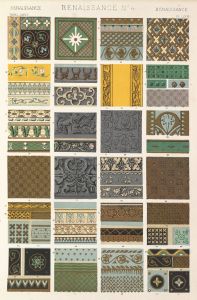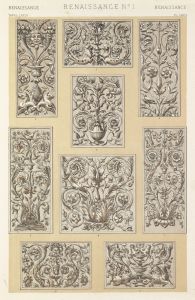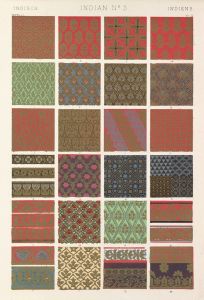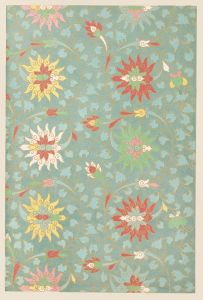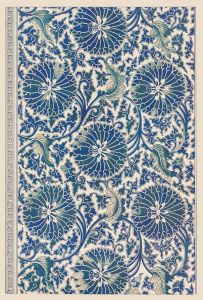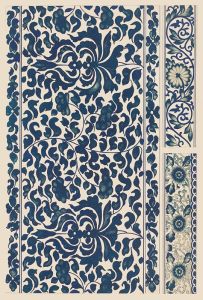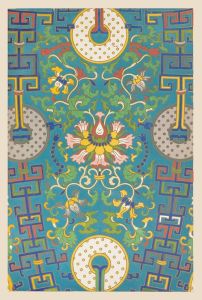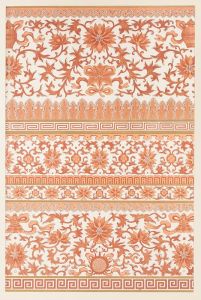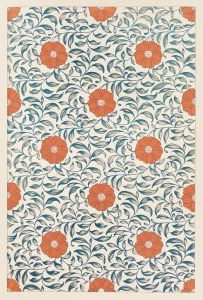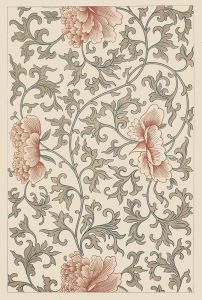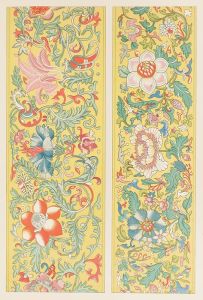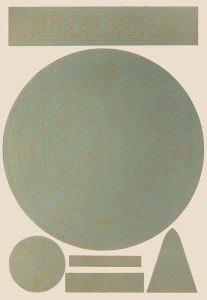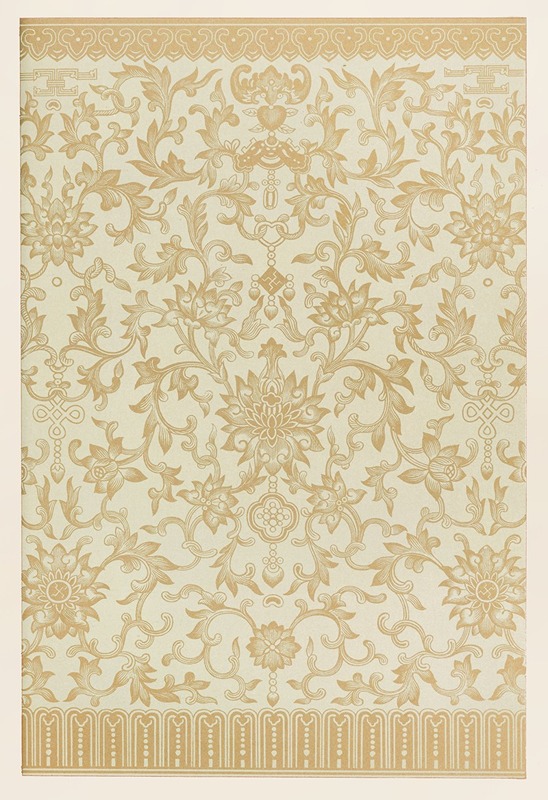
Examples of Chinese ornament, Pl.36
A hand-painted replica of Owen Jones’s masterpiece Examples of Chinese ornament, Pl.36, meticulously crafted by professional artists to capture the true essence of the original. Each piece is created with museum-quality canvas and rare mineral pigments, carefully painted by experienced artists with delicate brushstrokes and rich, layered colors to perfectly recreate the texture of the original artwork. Unlike machine-printed reproductions, this hand-painted version brings the painting to life, infused with the artist’s emotions and skill in every stroke. Whether for personal collection or home decoration, it instantly elevates the artistic atmosphere of any space.
"Examples of Chinese Ornament, Pl.36" is a plate from the influential design book "The Grammar of Ornament," authored by Owen Jones and first published in 1856. Owen Jones was a British architect and designer known for his pioneering work in color theory and his contributions to the decorative arts. His book aimed to provide a comprehensive guide to ornamental design, drawing from a wide range of cultures and historical periods.
"The Grammar of Ornament" is divided into several sections, each focusing on the decorative styles of different cultures, including Egyptian, Persian, Greek, Roman, and Chinese, among others. The book is renowned for its vivid chromolithographic plates, which were a relatively new printing technology at the time, allowing for the reproduction of vibrant colors and intricate details.
Plate 36 specifically showcases examples of Chinese ornamentation. Chinese decorative art is characterized by its use of symbolic motifs, intricate patterns, and vibrant colors. These elements are deeply rooted in Chinese culture, philosophy, and religion, often reflecting themes of nature, mythology, and auspicious symbols.
In Chinese ornamentation, common motifs include dragons, phoenixes, clouds, and floral patterns, each carrying specific meanings. Dragons, for example, are symbols of power, strength, and good fortune, while phoenixes represent beauty and grace. The use of clouds in design often signifies the heavens or celestial realms, and floral patterns can symbolize growth, prosperity, and harmony.
Jones's depiction of Chinese ornament in Plate 36 would have been informed by these traditional motifs and styles, capturing the essence of Chinese decorative art as understood in the mid-19th century. His work was part of a broader Victorian fascination with the "exotic" arts of Asia, which were becoming more accessible to European audiences through increased trade and cultural exchange.
The influence of "The Grammar of Ornament" extended beyond its immediate aesthetic appeal; it played a significant role in shaping the design principles of the Arts and Crafts Movement and later modernist design. Jones advocated for the use of historical ornament as a source of inspiration rather than direct imitation, encouraging designers to understand the underlying principles of design from various cultures.
While "Examples of Chinese Ornament, Pl.36" is just one of many plates in Jones's book, it represents a crucial moment in the Western appreciation and interpretation of Chinese art. The plate, like others in the book, serves as a historical document that reflects the 19th-century European perspective on non-Western art forms, contributing to the ongoing dialogue between different artistic traditions.
Overall, Owen Jones's work remains a valuable resource for historians, designers, and artists interested in the rich tapestry of global decorative arts, and Plate 36 continues to be a point of reference for those studying Chinese ornamentation.





